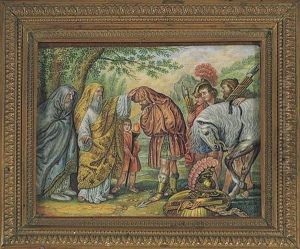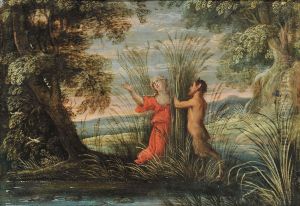Jan Brughel Paintings
Jan Brueghel the Elder, born in 1568 in Brussels, was a Flemish painter and an important figure in the Northern Renaissance who is known for his detailed landscapes and still life paintings. He was the son of the famed Pieter Bruegel the Elder and the brother of Pieter Brueghel the Younger, making him a member of a dynasty of painters that had a significant impact on the development of Flemish art during the 16th and 17th centuries.
Despite the fact that his father died when he was just one year old, Jan Brueghel inherited a strong artistic legacy and was trained by his grandmother, Mayken Verhulst, who was herself an accomplished artist. He continued his education by studying with several prominent artists of his time, including Pieter Goetkindt. Jan traveled extensively in his early years, visiting Italy, where he absorbed influences from the Mannerists and Venetian painters. He worked in Milan for Cardinal Federico Borromeo and was influenced by the lush landscapes of the region.
Brueghel returned to Antwerp around 1596 and became a master in the city's Guild of Saint Luke by 1597. His paintings often featured an incredible level of detail and were marked by a miniature-like precision. Brueghel was also known for his collaboration with other artists, including Peter Paul Rubens. The two artists worked on several pieces together, with Brueghel painting the landscapes or still life elements and Rubens adding the figures.
His works were highly sought after by patrons across Europe, and he enjoyed considerable success during his lifetime. Brueghel's oeuvre includes a variety of subjects such as allegorical scenes, mythological landscapes, sea harbors, flower pieces, and still lifes with precious objects. His 'flower garland' paintings, which featured flowers arranged in a circular garland around a devotional image or portrait, were particularly innovative and popular.
Jan Brueghel the Elder passed away in 1625 in Antwerp. His legacy continued through his sons Jan Brueghel the Younger and Ambrosius Brueghel, who both became painters. Today, Jan Brueghel the Elder is recognized for his contribution to the development of landscape and still life painting in the early seventeenth century.

